- Call Us: +92 (325) 8832230
- mail@chaudharyrentacar.pk
5 best places to visit in lahore in one day
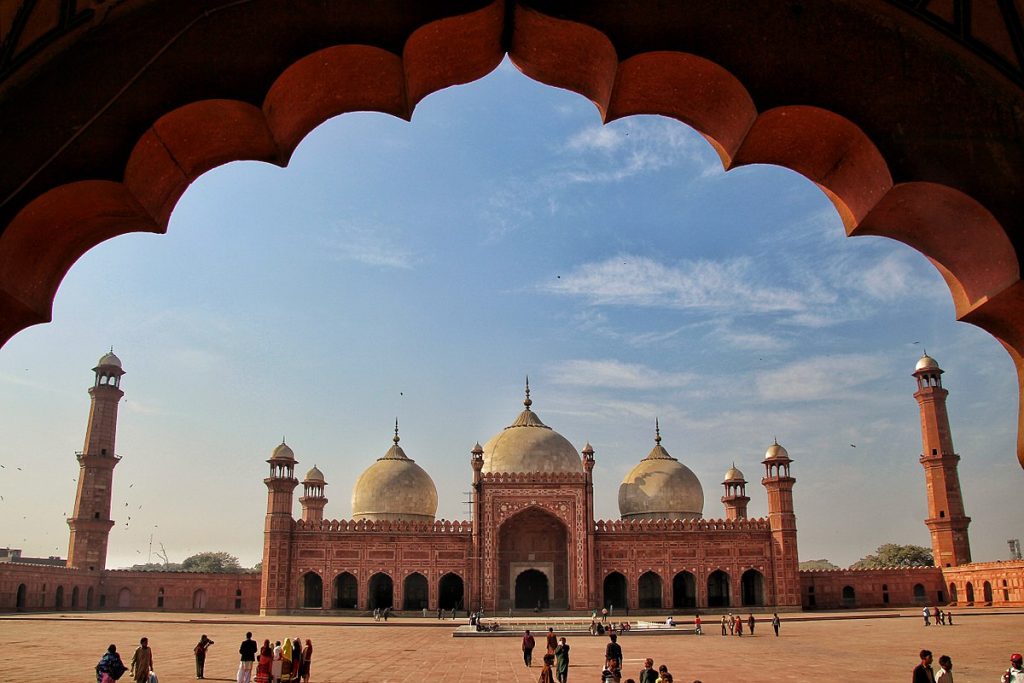
Lahore, the Mughal capital of Punjab, Pakistan, is a city that effortlessly blends historical grandeur with cultural riches. As you walk through its busy streets, you’ll feel the timeless appeal of a place steeped in significance. The Old City, with its maze of alleys, is studded with architectural marvels like the magnificent Badshahi Mosque and the grandeur of Lahore Fort. These buildings tell stories of kings, dynasties, and the British rule that once shaped the subcontinent. Every corner of this city whispers tales of creativity and power, making it a jewel for any history lover or student of culture.
For those with just one day to visit, an excellent plan is essential. Start by exploring the famous places like the Badshahi Mosque and Lahore Fort, which are located close to each other. Don’t miss the bazaars, where the smell of spices mixes with the sounds of Sufi poetry, creating an enchanted atmosphere. If you have time, hop over to the Indian border to witness the bizarre ceremony that takes place daily. The city’s rich history and cultural tapestry, influenced by Jain, Hindu, Buddhist, Mughal, and British traditions, make it a must-visit destination. Whether you’re a regular traveler or a first-time visitor, Lahore promises an exciting voyage through centuries of heritage and beauty.
1. Badshahi Mosque
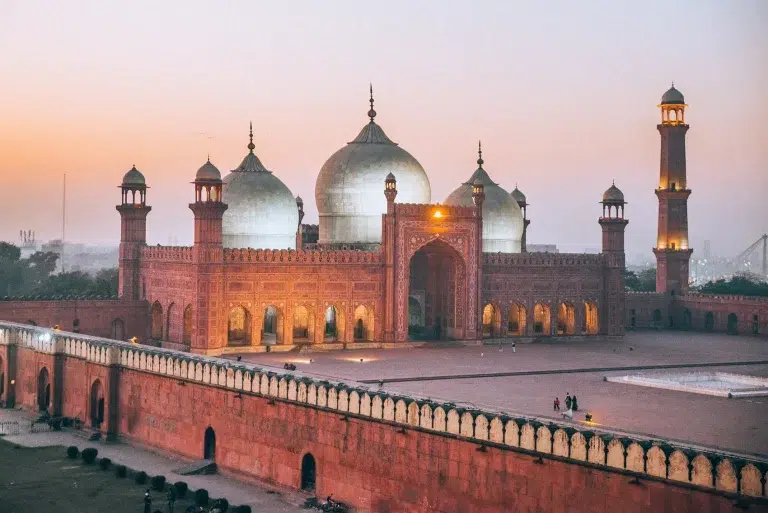
Begin your day by touring the renowned Badshahi Mosque, a true marvel of Mughal architecture. Built by Emperor Aurangzeb in the 17th century, this majestic mosque is one of the biggest mosques in Pakistan and the second largest in the world. Its elaborate marble work, gorgeous domes, and delicate calligraphy make it a wonderful edifice to explore. As you wander through its expansive courtyard, take your time to admire the fine elements of this historical gem. The mosque’s famous red sandstone and intricate carvings are a testament to the creativity of its builders.
The Badshahi Mosque is not just a place of worship but also a popular landmark for tourists. Every day, thousands of Local Pakistani and foreigners come to explore its beauty. The mosque faces east, so on a sunny day, the best pictures can be taken in the morning when it opens. When visiting, remember to leave your shoes at the entrance and carry them in a plastic bag to avoid losing them. Women should bring a scarf to cover their head as a sign of respect.
Located near the Walled City at the Northern end, the mosque dates back to 1673 and is close to other important tourist spots. Its elevation is similar to the Jama Masjid in Delhi, built by Aurangzeb’s father, Shah Jehan. The mosque can cover an area of 276,000 square feet and accommodate 100,000 people to pray at once, with space for 10,000 inside. The towers stand 196 feet tall, adding to its grandeur. Despite suffering under the power of Maharaja Ranjit Singh, the mosque was restored and added to the UNESCO World Heritage Site list in 1993. Its location, opposite the Famous Bus Stand of Lari Adda, makes it easily accessible for visitors.
2. Lahore Fort
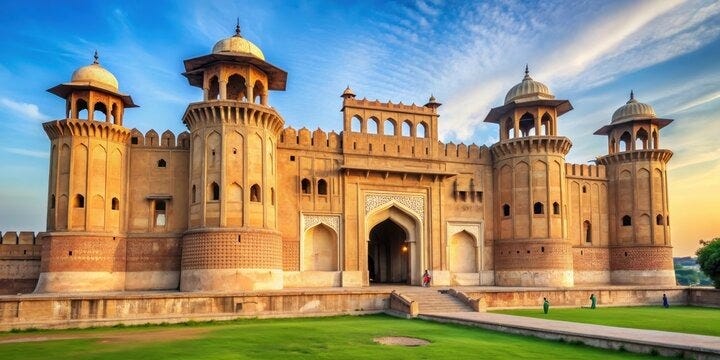
The Lahore Fort, also known as Shahi Qila, is the second most popular historical place to visit in Lahore. Built during the Mughal era by Emperor Akbar in 1580, it served as the capital of the Mughal Empire in the 16th century. The fort is a sprawling complex covering 20 hectares, filled with buildings made of marble and red brick. Each ruler, from Akbar to Aurangzeb, left their marks by adding renovations and additions, making it a blend of different styles. The entrance, the Alamgiri Gate, was built in 1674 and was large enough to allow several elephants carrying royal family members to enter at once.
Inside the fort, you’ll find elaborate mansions, royal apartments, and beautiful gardens. One of the highlights is the Sheesh Mahal (Palace of Mirrors), built by Shah Jahan in 1644 for the private use of the ladies. Its stunning mirrored interiors and creative splendor are a testament to the Mughal Empire’s architectural brilliance. The Moti Masjid, a small mosque within the fort, was restored to its original shape in 1904. Despite being damaged when the Empire fell in the 18th century, the fort has been carefully restored, allowing local and foreign visitors to explore its rich history.
Today, the Lahore Fort is a UNESCO World Heritage site, named in 1981, and includes three museums: the Armory Gallery, the Mughal Museum, and the Sikh Museum. Walking through its complex feels like flipping through the pages of History, as it showcases the remaining architecture from multiple generations of Mughal rulers. Whether you’re a history enthusiast or a casual traveler, this landmark is a must-visit to truly understand the strength and fortitude of the Mughal Empire.
3. Shalimar Gardens
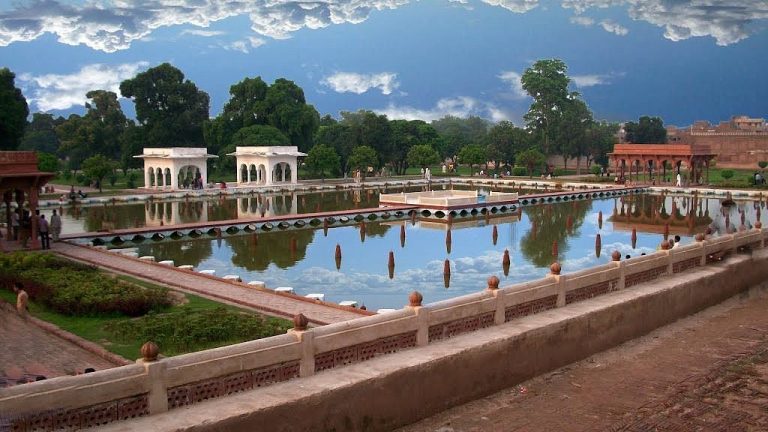
The Shalimar Gardens, a UNESCO World Heritage site, is one of the most stunning historical places to visit in Lahore. Built in 1641 AD by the Mughal emperor Shah Jahan, this magnificent garden is a perfect example of Mughal design, based on the Char Bagh layout. The garden features three elevated levels of terraces—Hayat Baskh, Faiz Baksh, and Arah Baksh—each adorned with more than 350 fountains that create a tranquil sanctuary. The flowing water not only adds to the symmetrical beauty but also helps cool the surroundings, especially during the summer months.
As you stroll through the tiered gardens, you’ll notice the lush greenery, embellished pavilions, and water channels that make this place a fantastic sight. The garden was once adorned with gemstones, which have long been removed, but its magnificent design still delights visitors. The trees planted here, including cherry, almond, mango, and apple, add to the natural beauty, making it a great place for nature-loving tourists and couples to relax or enjoy a picnic.
The Shalimar Gardens are located near Bhagbanpura on GT Road, close to the famous shopping street of Lahore. The construction of this complex was supervised by Khalilullah Khan, who was awarded in Shah Jahan’s court for his work. Over the years, the garden has been under the ownership of the Arain Family, who have maintained its historical charm. Whether you’re a history enthusiast or just looking to escape the bustle of the city, the Shalimar Gardens are a must-visit destination in Lahore.
4. Wagah Border Ceremony
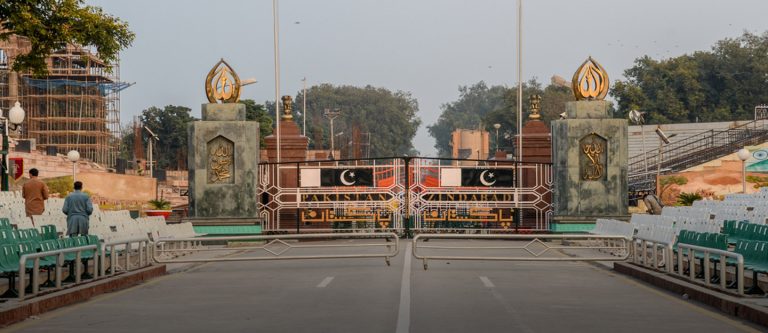
A visit to the Wagah Border is a must-visit experience when exploring Lahore. This bizarre yet fascinating place is the only border checkpoint between Pakistan and India where foreigners can cross. The main attraction is the stunning flag-lowering ceremony, held every evening, where Pakistani and Indian troops perform synchronized drills and raise national flags in front of adoring audiences. The atmosphere is cheerful, with people clapping, children waving flags with painted cheeks, and popcorn sellers moving through the rows. The music blares at the highest volume, adding to the patriotic passion that fills the air.
The ceremony itself is a fun and unique spectacle. As the flag bearers arrive, the crowd participates in chants, creating an atmosphere that reminds you more of a sports stadium than a border. The troops perform impossibly high leg lifts and threatening gestures, making it a worthwhile experience. If you’re planning a one-day itinerary in Lahore, make sure to double-check the ceremony’s timing with your hotel staff. In winter, it starts early, around a quarter past four, so arrive at least an hour in advance to secure a good spot.
While the Wagah Border is a fantastic way to cap your journey, it’s important to plan your day wisely. If you’re running late, consider skipping the Shalimar Gardens to ensure you don’t miss this must-visit event. The border closure ceremony marks the conclusion of a day spent exploring the old city of Lahore, leaving you with memories of a unique and patriotic experience.
5. Wazir Khan Mosque

The Wazir Khan Mosque, located in the city of Lahore, Punjab, is a 17th Century architectural gem that stands as a testament to Mughal-era grandeur. Commissioned in 1634 AD during the reign of Shah Jahan, it was built by Ilam-ud-din Ansari, the chief physician to the Mughal Court, who later became the Subedar (Viceroy) of Punjab. The mosque was designed to enclose the tomb of Miran Badshah, an esteemed Sufi saint, whose resting place lies in the courtyard. Its construction was completed in 1641 AD, and it quickly superseded the older Maryam Zamani Mosque as the main mosque for Friday prayers in Lahore.
The mosque is renowned for its intricate Persian-style Kashi-kari tile work and elaborate Mughal-era frescoes. The interior is richly embellished with frescoes, while the exterior is lavishly decorated with faience tile work that covers almost all surfaces. The main prayer hall is a stunning sight, with fantastic decorations, calligraphy, and tilework that leave visitors in awe. Currently, the frescoes are undergoing restoration by art students participating in volunteer internships, offering a unique chance to see restoration work in progress.
The mosque is part of a larger complex that includes a row of shops traditionally reserved for calligraphers and bookbinders, adding to its cultural significance. Built on an elevated plinth, the mosque’s outer perimeter measures 279 ft (85 m) by 159 ft (48 m), with its long axis parallel to the Shahi Guzargah. The main portal opens onto the Wazir Khan Chowk, a town square that was once a bustling hub. Whether you’re a history enthusiast or a casual tourist, the Wazir Khan Mosque is a must-visit for its beautiful architecture and rich history.
Getting Around Lahore: Your Travel Options
When getting around Lahore, you have multiple options to explore the city. If you only have one day, a great option is to hire a guide who can take you around, helping you see as much as possible while you learn about the city. If you prefer to explore by yourself, you can book a car for a cool experience. Whatever you choose, getting around Lahore is an adventure waiting to happen.

Save big with our cheap car rental
Contact
- +92 325 8832230
- mail@chaudharyrentacar.pk